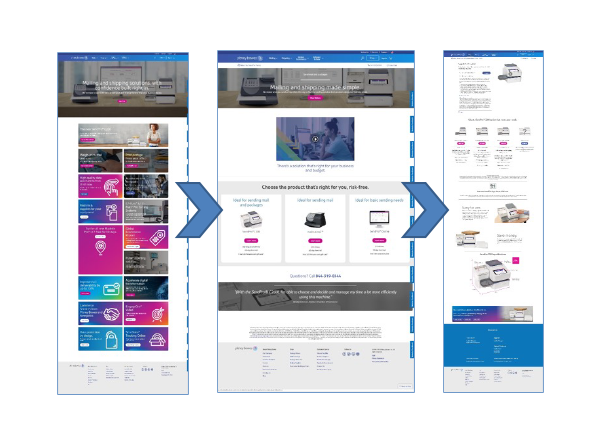“Fail often, fail fast,”
―
How I have implemented testing in my process
As a seasoned UX designer/director, I have consistently emphasized the importance of testing in our design processes. Testing serves as the cornerstone for validating design decisions, understanding user preferences, and iterating towards more effective solutions.
Let me take you through the journey of of implementing testing within my team and the importance of doing just that. I will explain the significance of testing, particularly A/B testing, Moderated Testing, and User testing, and how their implementation has propelled my team’s maturity in delivering exceptional user experiences.
Why Testing Matters
Testing is integral in ensuring that our design solutions align with user needs and preferences. It enables us to gather data on user interactions, preferences, and pain points, which in turn informs iterative improvements. Without testing, we rely solely on assumptions, risking the creation of products that fail to resonate with our target audience.
Implementing A/B Testing
A/B testing, also known as split testing, involves comparing two versions of a design to determine which one performs better. To harness the power of A/B testing, I collaborated closely with the Analytics team, pairing my designers and there Analyst together to come up with test ideas and hypothesis’s that we would then act on regularly. These collaborations facilitated rapid ideation and implementation of A/B tests, ensuring continuous improvement of our digital products. By analyzing metrics and user feedback, we could identify winning design variations and iterate towards more effective solutions. This iterative approach has resulted in tangible improvements in key performance indicators and user satisfaction metrics.
Example Tests
Example Tests
Leveraging Moderated Testing
Leveraging Moderated Testing
Moderated testing involves observing users as they interact with prototypes or live products in a controlled environment. Partnering with my CX colleague, I conducted moderated testing sessions, about 2-3 a year. They focused on key areas identified through our customer feedback form. These sessions provided invaluable insights into user sentiments and preferences, guiding our roadmaps for the coming year. By observing real users interact with our products, we could address usability issues and refine our designs to better align with user expectations.
Embracing User Testing
User testing entails gathering feedback from representative users through surveys, interviews, or usability tests. By soliciting direct input from our target audience, we gain invaluable perspectives on usability, accessibility, and overall satisfaction. I have each designer taking ownership of user testing, conducting tests before handing off designs to developers. This final check ensured that our designs are intuitive and user-friendly, minimizing friction for end-users. By leveraging platforms like UserTesting, we could delve into the “why” behind user actions, complementing quantitative data with qualitative insights to inform design decisions. Embracing user testing has fostered a culture of empathy and user advocacy within our team, ensuring that our design decisions are grounded in user needs.
Example Tests
Progressing in UX Maturity
Through the implementation of A/B testing, moderated testing, and user testing, my team has witnessed a significant progression in UX maturity. We have transitioned from subjective design decisions to data-driven iterations, resulting in more user-centric and effective solutions. By fostering collaboration between design, analytics, and customer experience teams, I have cultivated a culture of continuous improvement and innovation. Moving forward, I remain committed to refining our testing practices and elevating our UX maturity to new heights.






